Historic Site Review: Ham House
An idyllic National Trust property tucked away in a beautiful corner of London
I spent most of the month of May in Europe, which naturally meant that I visited many historic palaces, castles, and homes. You’ll see many of them in posts here in the future, but I wanted to start with one in the London area that was entirely new to me. My friend Rhiannon (who was kind enough to host me for part of my time in London) suggested that we visit Ham House and Gardens, nestled into the lovely area of Richmond. I am always down to see a historic house, so I readily agreed.
Ham House was built in 1610 by an unknown architect but was acquired by William Murray in 1626. William was a close friend of Charles I, having grown up in court alongside him as his uncle was a tutor to the young prince. William and his wife Catherine updated the house to the French style in the late 1630s. After Charles I’s execution following the English Civil War, William had to flee and died in exile in Holland.
William’s daughter Elizabeth Murray inherited the house in 1649. She was bold and brilliant, married to Sir Lionel Tollemache, and mother to eleven children. After his death, she married John Maitland, the Secretary of State for Scotland. It was transformed by the (newly titled) Duke and Duchess of Lauderdale in the Stuart period into the fine house it is today. However, their extravagance in remodeling came at a cost, and Elizabeth had money issues in her last years.
The house remained in the family until 1948 when it was given to the National Trust. It was used as government offices until the 1990s when it opened to the public. In more recent times, the house has also been a filming location for many movies and TV shows. The new adaptation of Rebecca, starring Lily James, used the house to create several rooms in Manderley, Maxim de Winters’s home.
The house is filled with paintings, furniture, and other objects, ranging from a Chinese teapot used by the Duchess to an impressive collection of miniatures. You can view some of the Green Closet online through a new photography project. It’s one of the only examples of a 17th-century closet to survive to the modern era and still houses many of its original paintings.
We had a lovely time exploring the house at our own rate, and while I would have loved a bit more signage, what they had was informative. There are many rooms to go through, making it easy to spend an hour or even two just in the house itself. One of my favorite parts was seeing the Duchess’s bathroom and large bathtub in one of the last rooms of the tour.
My only real critique of the site’s interpretation is that they have a couple of paintings that have Black people in them, and I would have appreciated more information about who they might be. One panel noted that the Black person might be a symbol of the sitter’s wealth rather than an actual person, but I wish they had mentioned if the family had any ties to the slave trade or plantations in the British islands.
Both Rhiannon and I were delighted by the little signs that they had warning us not to touch the pieces of furniture or textiles. Typically museums will have simple “Don’t touch” signs, but Ham House definitely went above and beyond with little signs written in first person from the object’s perspective, either warning “I am very fragile” or “The Duchess bought me over 350 years ago.” It’s a small thing, but a very cute way to ensure people don’t touch the artifacts.
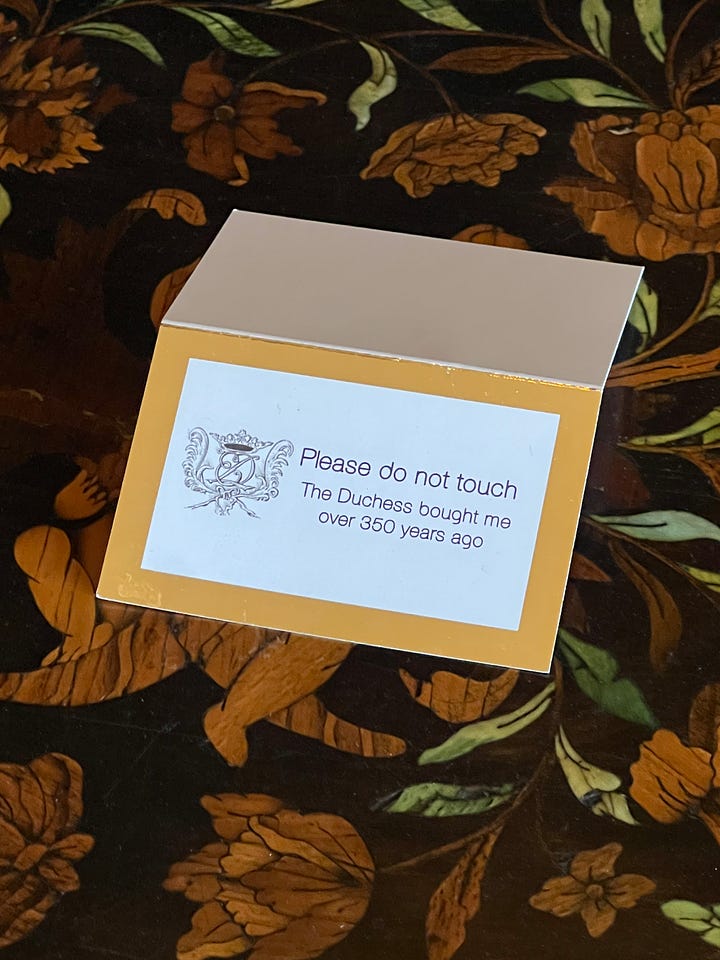
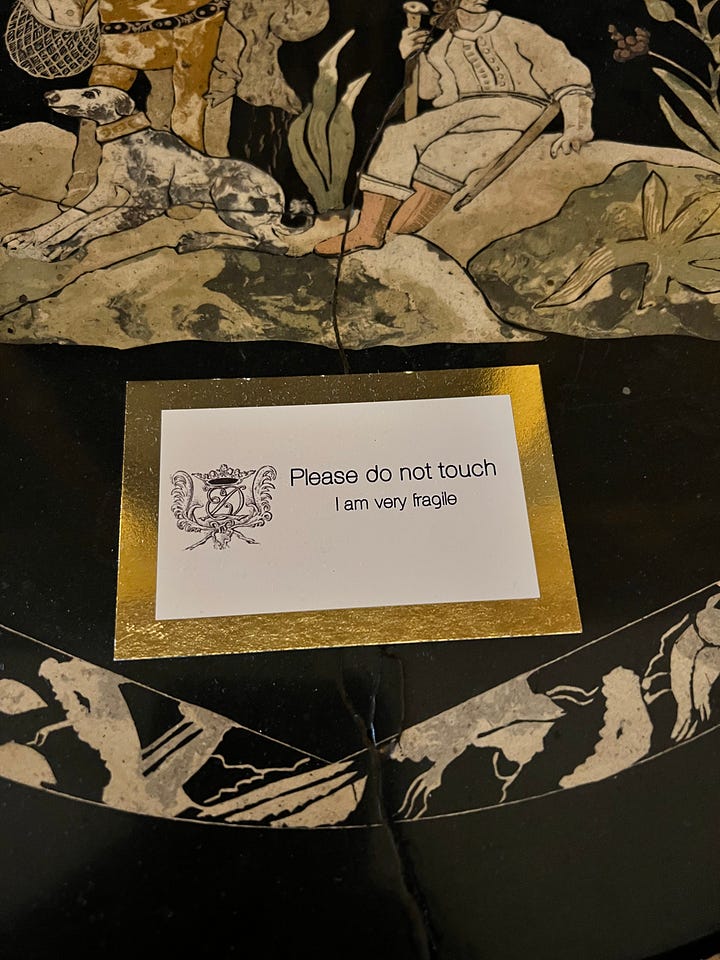
Ham House and Garden is in Richmond, on the western side of London. It is open every day for self-guided tours. There is also a café and shop available for visitors.

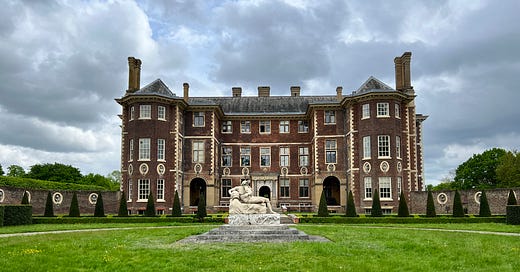


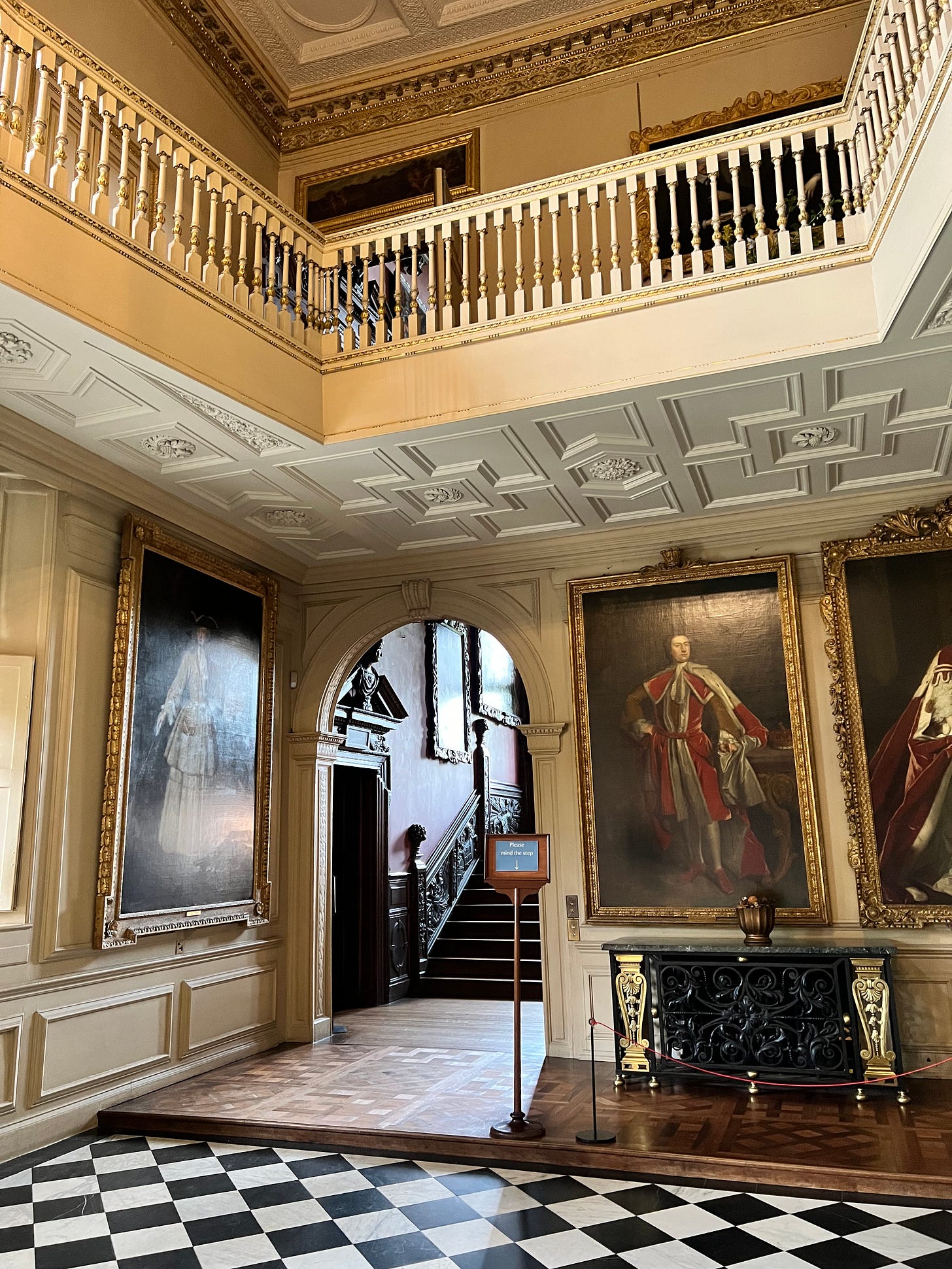
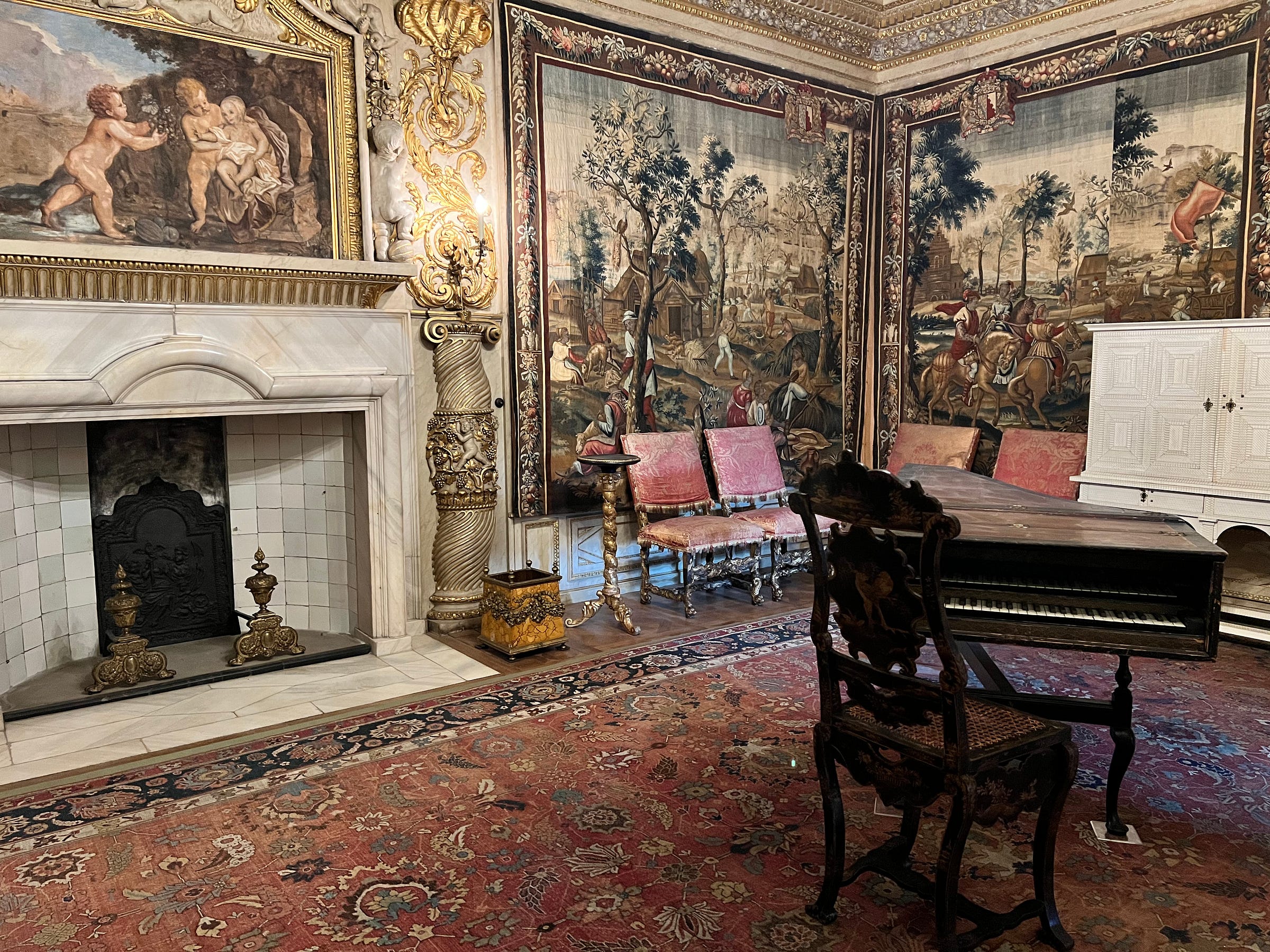
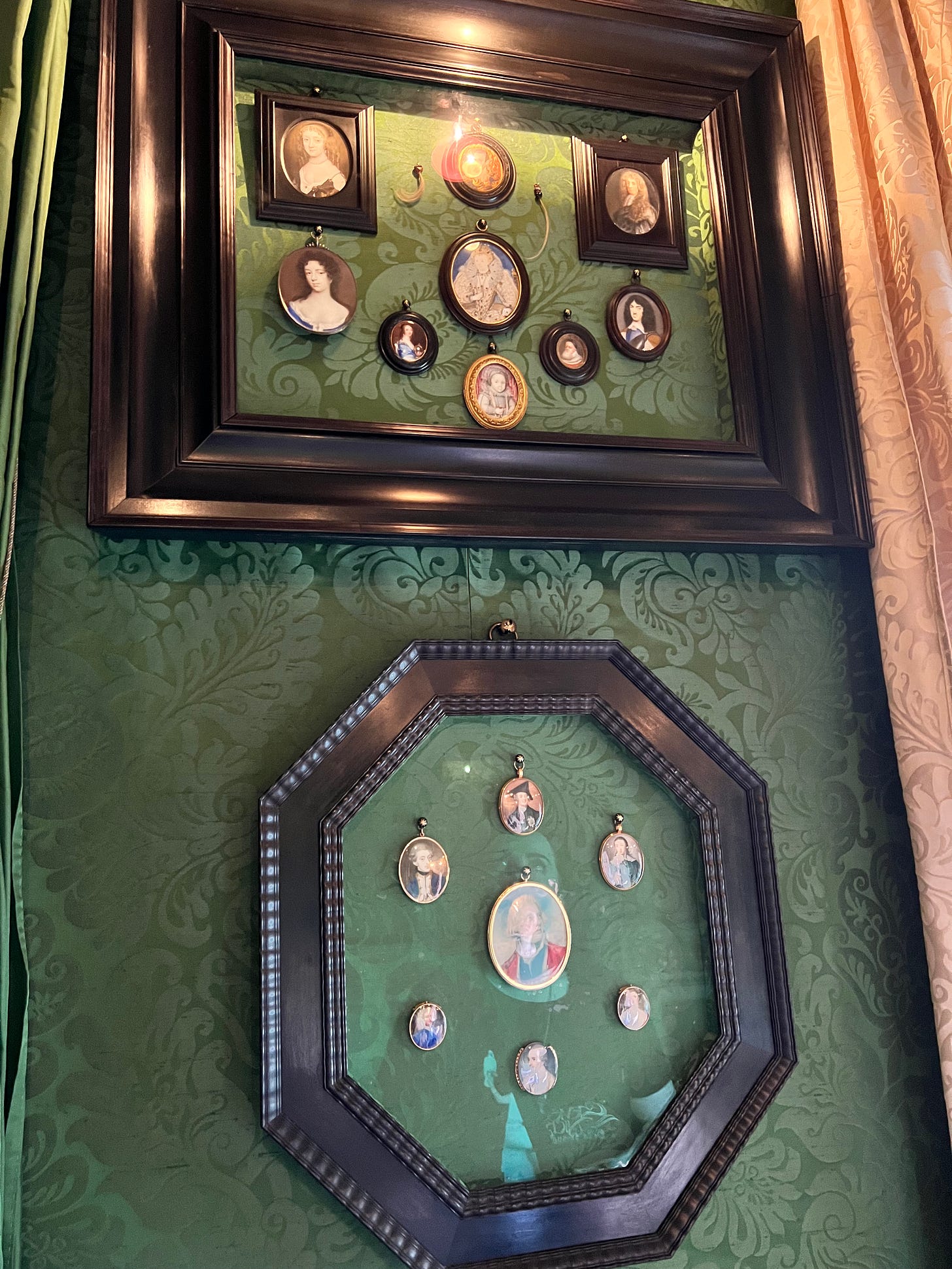
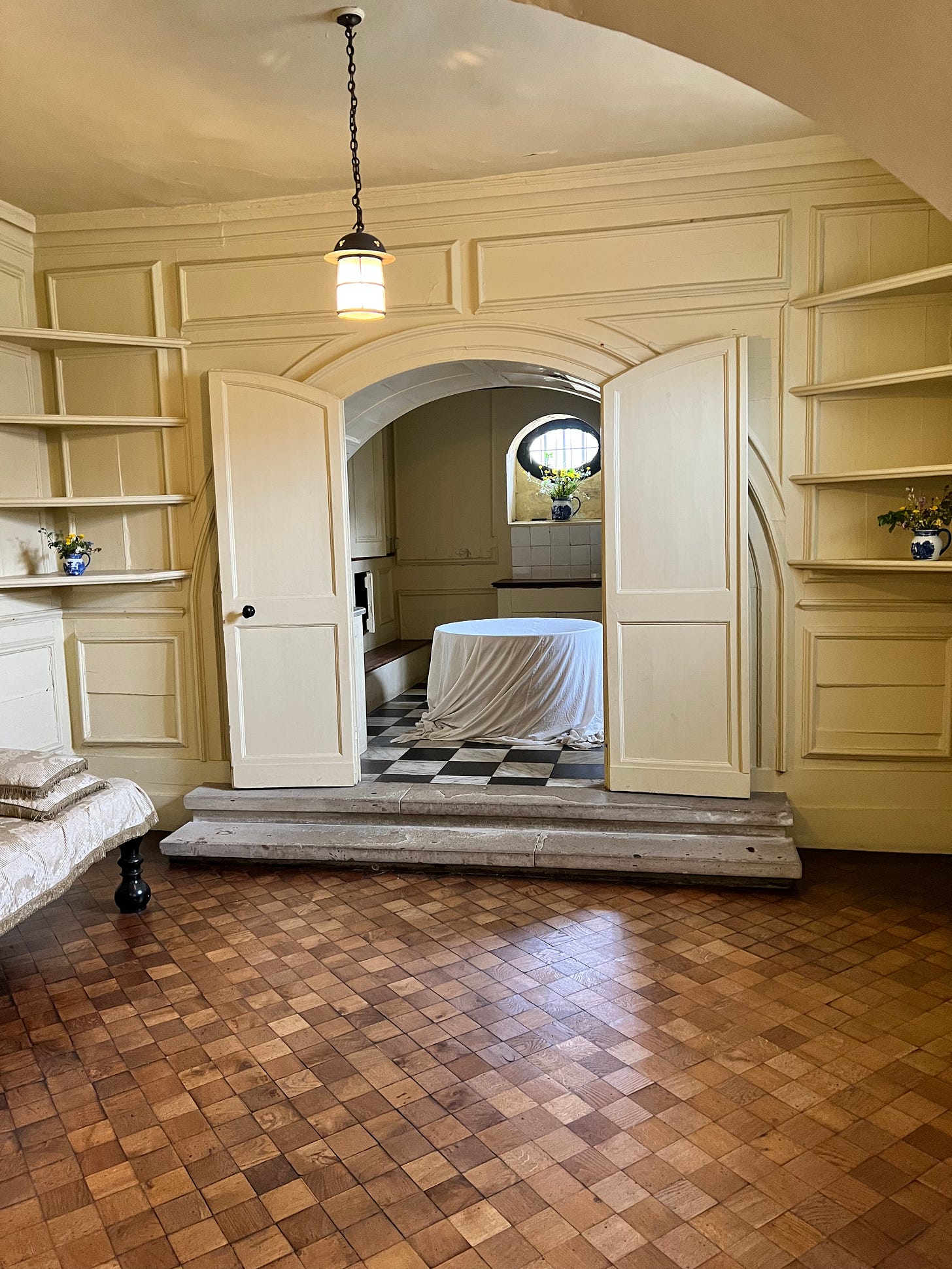
A wonderful post! It was such a fun day at Ham House — one of my favourites!